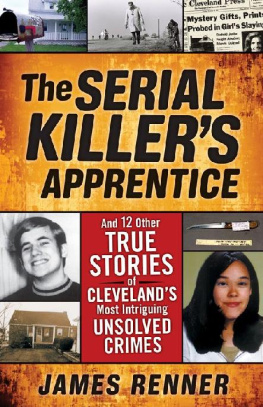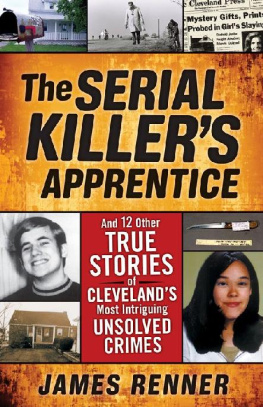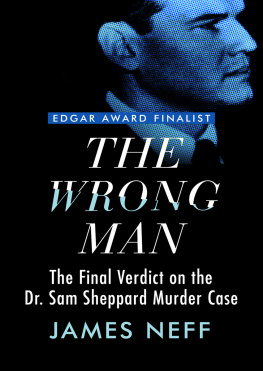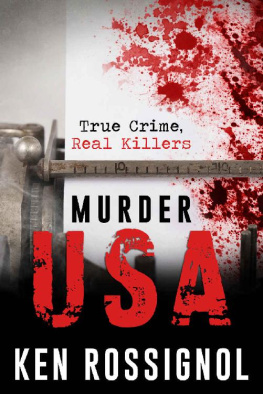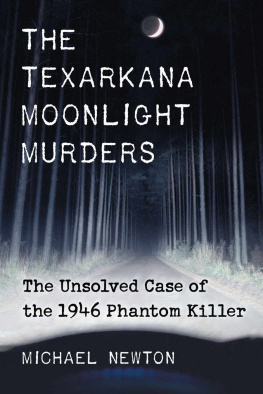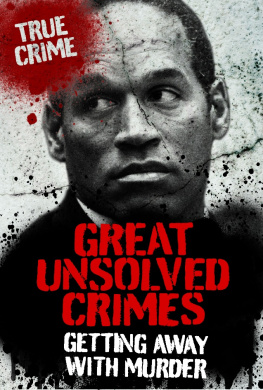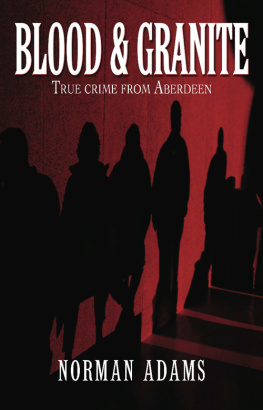The Serial Killers Apprentice
And 12 Other True Stories of Clevelands Most Intriguing Unsolved Crimes
James Renner
Gray & Company, Publishers
Cleveland
Thank you for supporting the rights and livelihoods of independent authors and publishers. Please purchase only authorized electronic editions, and please do not participate in or encourage electronic piracy of copyrighted materials.
Copyright 2008 by James Renner
All rights reserved. No part of this book may be reproduced or transmitted in any form or manner without written permission from the publisher, except in the case of brief quotations embodied in critical articles or reviews.
Photos by the author unless otherwise credited.
Gray & Company, Publishers
www.grayco.com
eISBN 978-1-59851-076-8
v 1.0
Also by James Renner
Nonfiction:
Fiction:
For my dad, who always had my back.
Give me your blessing;
truth will come to light; murder cannot be hid long;
a mans son may, but in the end truth will out.
Shakespeare, The Merchant of Venice
Contents
Foreword
by Robert Sackett, Captain in charge of the Beverly Jarosz case
Veteran homicide detectives have a rule of thumb: investigate quickly because the trail goes cold after 48 hours. In fact, a current popular television series is based on this premise. So why do police departments devote resources to cases that are 48 months or even 48 years old? And what part does the media and publics seemingly insatiable appetite for reading about these intriguing cases play in the process?
The practical reasons for reopening a case that has been dormant for years are well known. Murder has no statute of limitations, witnesses that were once reluctant to talk may come forward, accomplices may need to make a deal, and a murderer should never be allowed to think that he got away with it. Every generation has seen technological advances that give modern investigators the tools to solve a case that could not have been imagined by the original detectives. These are the reasons a cold case is solved; however, they do not explain why a detective presses on despite conventional wisdom and countless dead ends. Regardless of his claimed objective detachment, there is a human side that is the motivation for the investigators dogged pursuit of the answer.
After reading the files, you seek out family, friends, witnesses, retired officers, and anyone else who may give you some insight. You soon come to realize that the victim is not the only victim and you see and hear first hand how the crime has impacted so many lives for so many years. You realize the family has persevered in spite of the fact that they can never put this behind them and move on; it gets personal and you make a silent vow to make an arrest if its the last thing you do. The original investigators did everything right, yet somehow you are determined not to let the family down a second time.
In words that are nearly sacrilegious in law enforcement circles, the media can be your best friend and play a crucial role in cold case investigations. Historically, the police release as little information as possible so not to compromise the investigation, yet the media naturally want all the details. These competing interests have created an adversarial relationship, even a distrust that must be set aside. Media involvement in cold cases generates the interest that may cause previously unknown persons to come forward with new information. There is also a negative side to publicity. In high profile cases, it seems that everybody has a theory and most cannot wait to talk about it. Suspects ruled out years ago, details so vague that they could not have been checked out at the time, not to mention years later, and conspiracy theories are all the subject of numerous calls. Nonetheless, cooperation with the media can be the impetus that uncovers the nugget that will later be called a breakthrough.
In the year 2038 when Detective Emily Smith of the Cuyahoga Regional Police Department is assigned an unsolved 2008 homicide case, no one can predict the technology that will be available to her. What is predictable is that she will work with the next James Renner and he will write a story so compelling that thousands will read it and it may generate the call that gives a family a long awaited answer and allows Detective Smith a well deserved good nights sleep.
Preface
On Writing True Crime
Sometimes I hunt killers. You could call it a hobby. Or maybe an obsession.
Its fun. It thrills me. It gives me focus. Theres nothing quite like showing up on the doorstep of a suspect who has been hiding for decades and asking him directly if he committed murder. Knowing that they are the focus of a police investigation doesnt seem to mean much to these anonymous demons. But realizing that their name is going to appear in the newspaper always makes an impression.
Mostly, the crime stories I write about are unsolved homicides committed not by serial killers but by someone who has never murdered again. They dont follow patterns. There is no M.O. They are crimes of opportunity, in which the universe and dumb luck lined up in just the right way as to afford their killer the once-in-a-lifetime chance to kill and not get caught. Somehow, Im more troubled by these random crimes; they suggest that many people are capable of committing murder if presented with the chance. These people then go about the rest of their lives as if nothing happened. Serial killers are a little easier to understand. They cant help it. And theyll go on killing until they get caught.
Theres one killer in particular that Im looking for: the guy who murdered Amy Mihaljevic in October 1989. I was just a few months older than Amy when she was murdered. I realized then that it could easily have been me who was taken. If a young girl could be kidnapped across the street from the Bay Village police department in broad daylight, the world was not the safe place our parents pretended it was. At 11 years old, I vowed to find Amys killer one day. It is the primary reason I became a journalist.
Every time I research another unsolved homicide in Northeast Ohio, Im also searching for anything that matches the Mihaljevic crime. I look for names of men who might have been questioned regarding Amys murder. Every time I interview a suspect in another case, I ask him if hes ever lived in Bay Village.
I believe the man who killed Amy killed again. And if I cant find his name in the boxes of material I keep related to her case, maybe Ill find him while investigating some other girls murder. Maybe Ive met him already.
The most frustrating thing about Amys case, and about the other unsolved cases youll read about here (including tales of bank heists, false identities, and people who simply vanish into thin air), is the lack of answers, of justice. These are great mystery stories from which some jerk has ripped out the last chapter. Sometimes we can guess who done it. But without that missing evidence or admission, without that last piece of the puzzle, we might never get to read a better ending. All I can say is, I tried to solve each and every one. I think I found the solution to a couple, though youre welcome to disagree with my conclusions. Maybe you can solve one yourself, based on the clues provided in these pages.
The good news is, in each case, there are still detectives devoted to giving us all the resolutions we hope for.
While researching these stories, I got to meet some of the areas finest police detectives and FBI agents. They take these cases home with them; this is not a nine-to-five job for any of them. And its no fault of theirs that these cases remain unsolved. Life is not CSI . Killers dont always leave behind DNA and calling cards.

